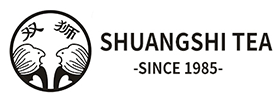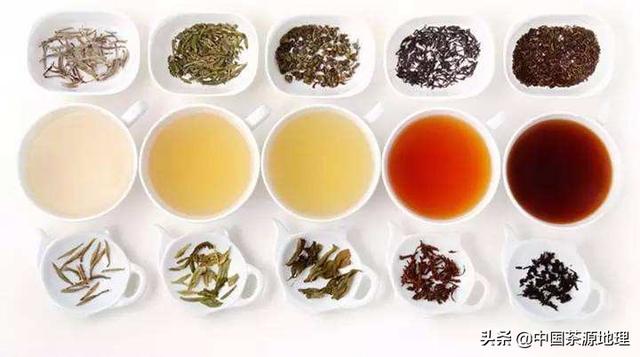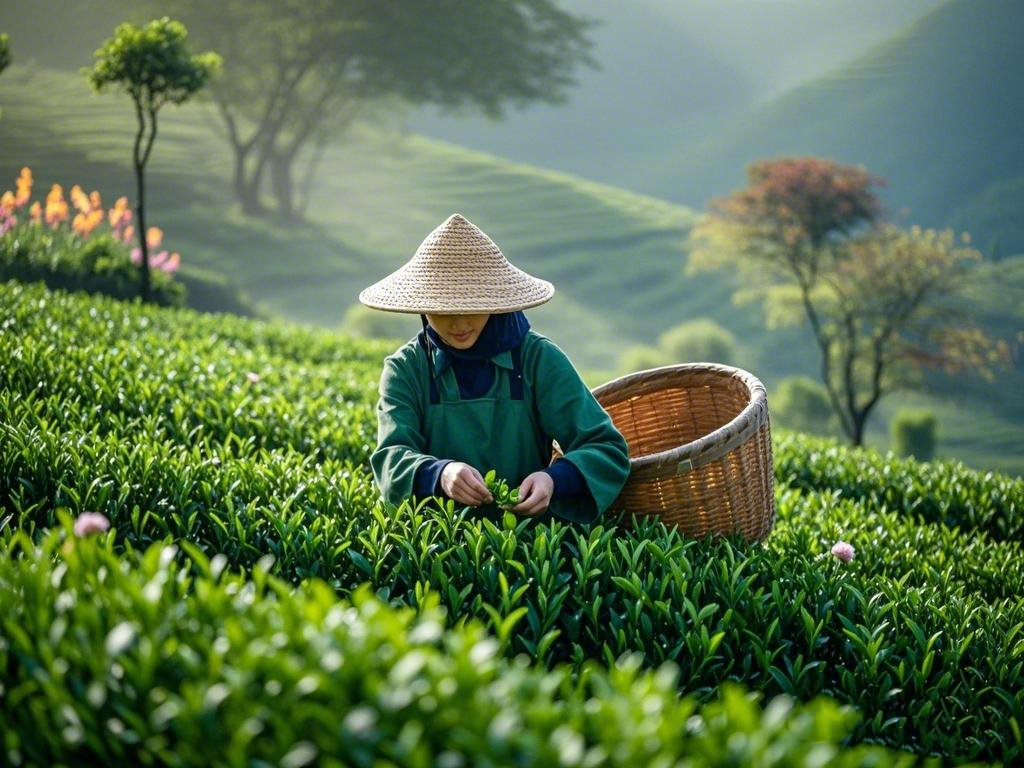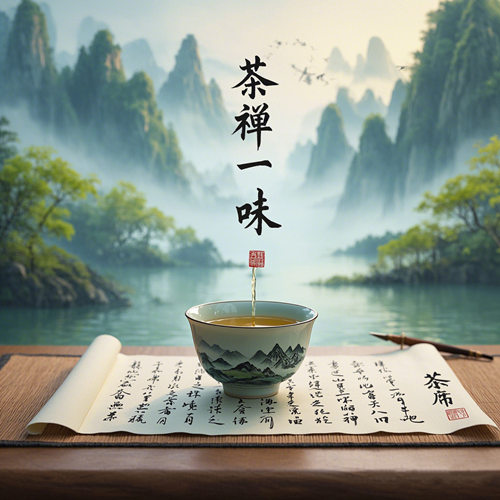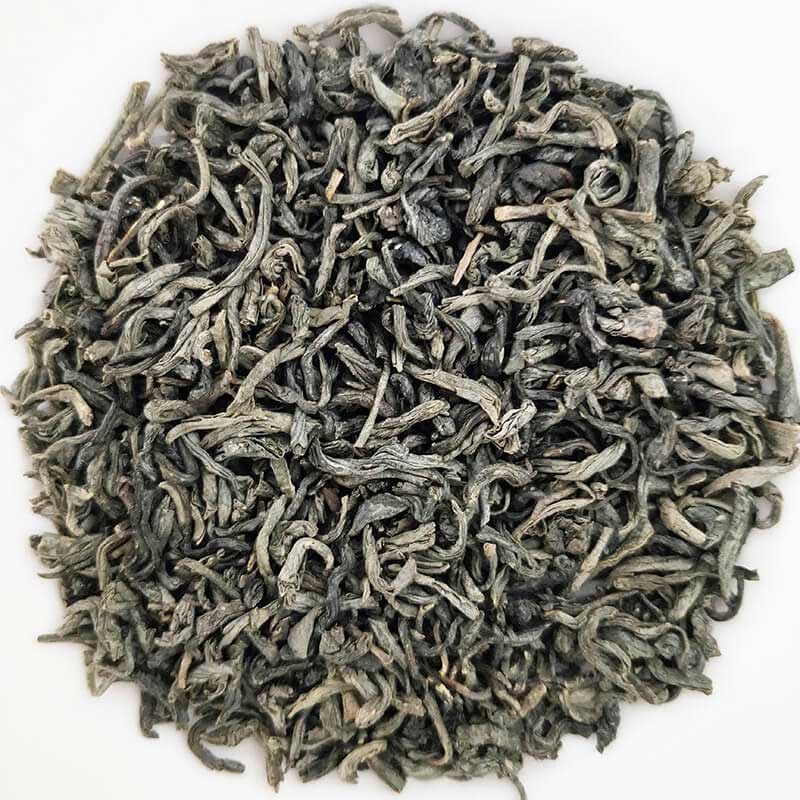China’s tea culture has a long history, with a vast tea area, different natural conditions, many varieties of tea trees, and unique harvesting and processing methods, resulting in a rich and colourful range of tea types. Traditionally, tea is divided into six categories: green tea, white tea, yellow tea, oolong tea (green tea), black tea and dark tea. In this article, we will introduce in detail the characteristics of these six major types of tea, the harvesting season, the difference between the raw materials used in the production and their detailed information.
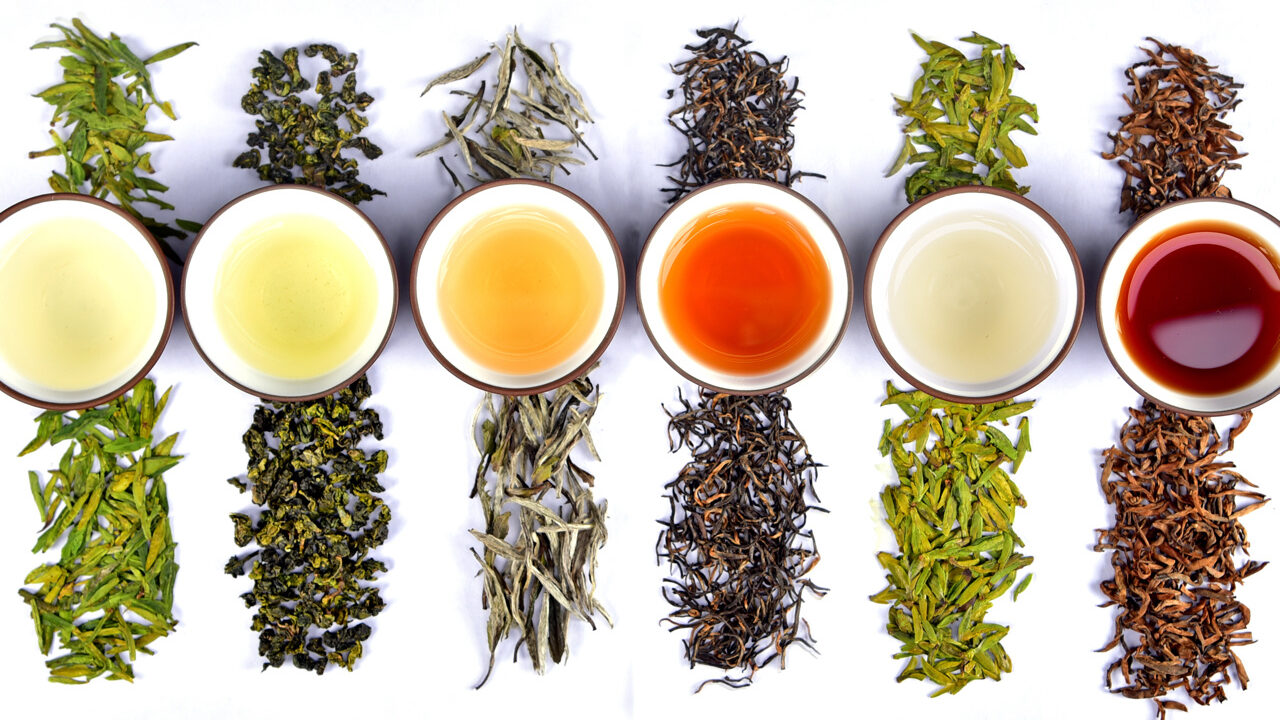
1. Green Tea (绿茶)
Characteristics
Green Tea is unfermented tea with green leaves and tea broth. The production process mainly includes three steps: greening, kneading and drying. Green tea retains most of the natural ingredients in the tea leaves and is characterised by its freshness, crispness and high aroma.
Details
China’s famous green teas include Xihu Longjing, Dongting Biluochun and Xinyang Maojian. West Lake Longjing is produced in Hangzhou, Zhejiang Province, with emerald green colour, high and long-lasting aroma, and fresh and sweet taste; Dongting Bi Luochun is produced in Suzhou, Jiangsu Province, with slender and curly threads, silver green and hidden green, and elegant fragrance.
Harvesting Season
Green tea is mainly picked in the spring buds, spring tea has a strong flavour, high aroma and the best quality.
Difference of raw materials
The raw material of green tea is mainly the young buds and leaves of the tea tree, which need to be killed quickly after picking to retain the freshness and green colour of the tea leaves.
2. White Tea(白茶)
Characteristics
White Tea is a micro-fermented tea, which is simple to produce and is made only by withering and drying. White Tea retains the original natural flavour of the tea leaves, with a unique fragrance and a sweet and mellow taste.
Details
The most famous variety of white tea is Silver Needle White Hair, produced in Fuding and Zhenghe counties of Fujian. Its appearance is covered with white hairs, and the tea soup is slightly yellow with a sweet and mellow flavour.
Harvesting Season
White tea is plucked from the spring buds, which are rich in substance and suitable for making high-quality white tea.
Difference in raw materials
The raw material of white tea is mainly the young buds of the tea tree, and it is not killed or kneaded during the production process to maintain the natural state of the tea leaves.
3. Yellow Tea(黄茶)
Characteristics
The production process of yellow tea is similar to that of green tea, but there is one more step of “smothering yellow” process, which makes the tea leaves fermented under hot and humid conditions to become yellow. Yellow tea has the characteristics of yellow leaves and yellow soup, with mellow flavour.
Detailed introduction
Yellow tea includes yellow bud tea, yellow small tea and yellow tea, of which yellow bud tea is of the highest quality. Yellow tea is most famous for Mengding Yellow Bud from Sichuan and Junshan Silver Needle from Hunan.
Harvesting Season
Yellow tea is also mainly made from spring buds, and the quality of spring tea is the best.
Difference in raw materials
The raw materials of yellow tea are similar to those of green tea, but there is an extra step of smothering, which makes the tea leaves ferment and turn yellow under the effect of moisture and heat.
4. Oolong Tea (乌龙茶)
Characteristics
Oolong tea is a semi-fermented tea, combining the fresh aroma of green tea and the richness of black tea. Its leaves are green in the centre and red at the edges, commonly known as green leaves with red edges. Oolong tea has a unique floral and long-lasting aroma.
Details
Oolong tea is mainly produced in Fujian, Guangdong and Taiwan, with famous varieties such as Tieguanyin and Da Hong Pao. Tieguanyin is famous for its unique Guanyin rhyme and orchid aroma; Dahongpao is famous for its rocky bone and flower aroma.
Harvesting Season
Oolong tea harvesting season is relatively flexible, spring and autumn tea quality is higher, especially Wuyi Rock Tea only do one season of spring tea.
Difference in raw materials
Oolong tea is made from mature tea leaves, which are semi-fermented under specific conditions through the greening process, forming a unique aroma and flavour.
5. Black Tea(红茶)
Characteristics
Black tea is a fully fermented tea, the tea leaves and tea broth are red in colour. Black tea has a strong aroma and full-bodied flavour, and is suitable for a variety of drinking styles.
Details
China’s famous black teas include Anwei Qi Hong, Yunnan Dian Hong and Hubei Xuan Hong. Keemun black tea is known for its unique Keemun aroma, high and long aroma, and mellow flavour.
Harvesting Season
Black tea harvesting season is flexible, but spring and autumn tea quality is higher.
Difference in raw materials
The raw materials of black tea are mostly mature tea leaves, which are made through withering, kneading, fermentation and drying, etc. The fermentation process oxidises the tea polyphenols into theaflavin and thearubigin, which form the unique flavour of black tea.
6. Dark Tea(黑茶)
Characteristics
Dark tea is a post-fermented tea with a unique aged aroma and mellow flavour. The raw materials of Dark Tea are coarse and old, and it is made through the processes of greening, kneading, fermentation and drying.
Detailed introduction
Black tea mainly includes Hunan black tea, Sichuan border tea and Yunnan Pu’er tea. Pu-erh tea is famous for its unique characteristic that the more it ages, the more fragrant it is.
Harvesting Season
Raw materials for black tea are mostly mature tea leaves, and the harvesting season is relatively flexible, but the quality of tea leaves is better in autumn.
Difference in raw materials
The raw materials used in the production of black tea are more coarse and old compared with other types of tea, which is also its uniqueness. Specifically, black tea is mostly made from the coarse and old stalks or fresh leaves of tea trees, such as the big-leaf variety, which are more mature and rich in inclusions, suitable for long fermentation and transformation. During the production process, these rough and old raw materials are gradually transformed into black tea with unique flavour and quality through the processes of greening, kneading, pile fermentation and drying, etc. Among them, pile fermentation is the process of fermentation.
Among them, the fermentation is the key step in the production process of black tea, and it is also an important link in the formation of the unique quality of black tea. During the curing process, a series of chemical reactions occur in the tea leaves, such as the oxidation and polymerisation of polyphenolic compounds, etc. These reactions not only change the colour, aroma and taste of the tea leaves, but also give the black tea a unique aged aroma and mellow taste. At the same time, the curing process also needs to control the appropriate temperature, humidity and oxygen content and other conditions, in order to ensure the smooth fermentation and the stability of tea quality.
